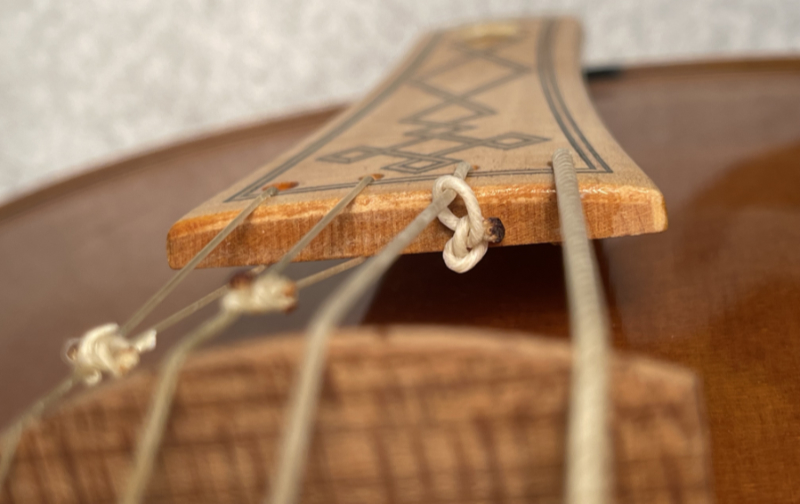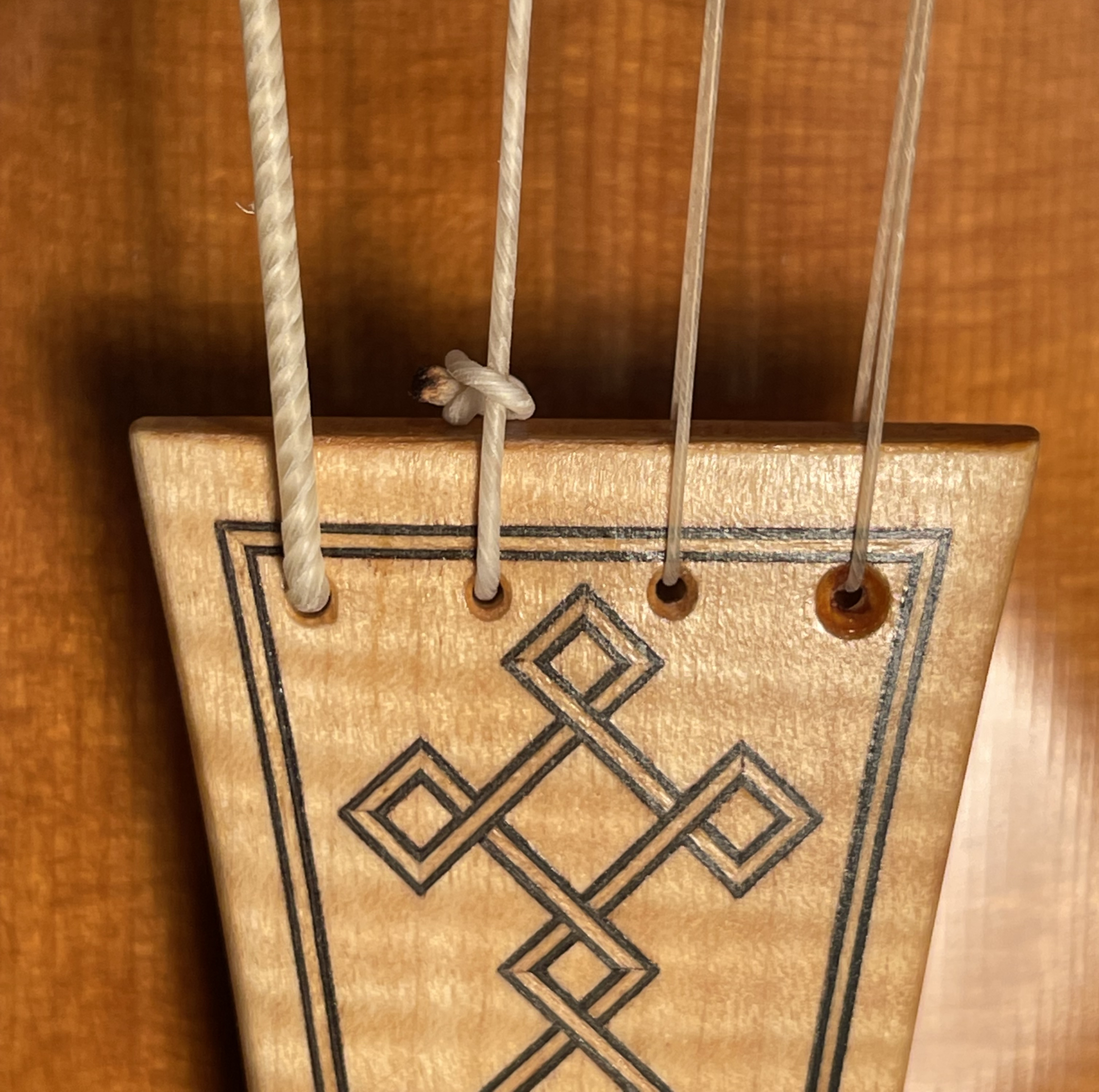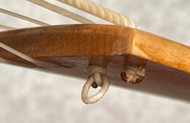String Knots
Feb 22nd 2022

- Pass the end of the string through a loop to make an overhand knot as in Figure A.
- Bring the end around and through the knot as in Figure B.
- Burn the end so the end has a mushroomed shape.
- Pull the string to tighten the knot against the end as in Figure C.
All strings require a knot at the end to hold them onto the instrument's tailpiece. Many players like to tie their own knots, but Gamut will tie the knot for you as an additional service if you want. The type of knot that we use includes a loop, and it can be unclear how best to handle that feature.
There are two ways the loop can be used in attaching the string. One way is to ignore the loop and simply pull the knot against the underside of the tailpiece, as in the picture below.

The second way is to pull the loop to the front of the tailpiece, passing the string through it. That will bind the end to the tailpiece, as in the images below.


Either method works well, so you can use the method that best suits your needs and aesthetics. For more information about tying Gamut strings, visit our Articles page.

